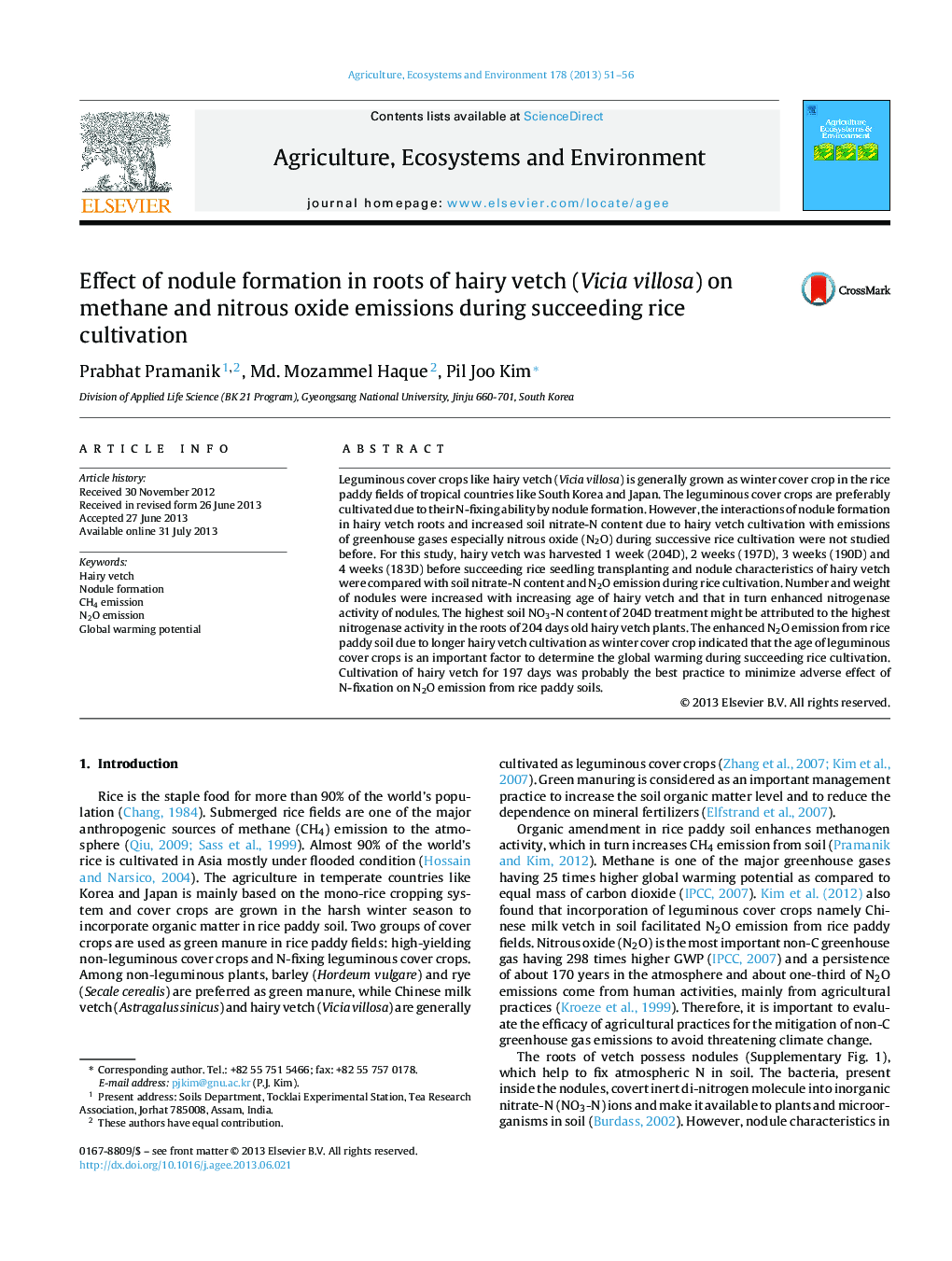| کد مقاله | کد نشریه | سال انتشار | مقاله انگلیسی | نسخه تمام متن |
|---|---|---|---|---|
| 2414224 | 1552074 | 2013 | 6 صفحه PDF | دانلود رایگان |

• Longer vetch cultivation increased nitrogenase activity of nodules.
• It leads to the higher NO3-N content and enhanced N2O emission from rice paddy soil.
• Harvesting vetch after 197 days significantly enhanced GWP during rice cultivation.
Leguminous cover crops like hairy vetch (Vicia villosa) is generally grown as winter cover crop in the rice paddy fields of tropical countries like South Korea and Japan. The leguminous cover crops are preferably cultivated due to their N-fixing ability by nodule formation. However, the interactions of nodule formation in hairy vetch roots and increased soil nitrate-N content due to hairy vetch cultivation with emissions of greenhouse gases especially nitrous oxide (N2O) during successive rice cultivation were not studied before. For this study, hairy vetch was harvested 1 week (204D), 2 weeks (197D), 3 weeks (190D) and 4 weeks (183D) before succeeding rice seedling transplanting and nodule characteristics of hairy vetch were compared with soil nitrate-N content and N2O emission during rice cultivation. Number and weight of nodules were increased with increasing age of hairy vetch and that in turn enhanced nitrogenase activity of nodules. The highest soil NO3-N content of 204D treatment might be attributed to the highest nitrogenase activity in the roots of 204 days old hairy vetch plants. The enhanced N2O emission from rice paddy soil due to longer hairy vetch cultivation as winter cover crop indicated that the age of leguminous cover crops is an important factor to determine the global warming during succeeding rice cultivation. Cultivation of hairy vetch for 197 days was probably the best practice to minimize adverse effect of N-fixation on N2O emission from rice paddy soils.
Journal: Agriculture, Ecosystems & Environment - Volume 178, 15 September 2013, Pages 51–56